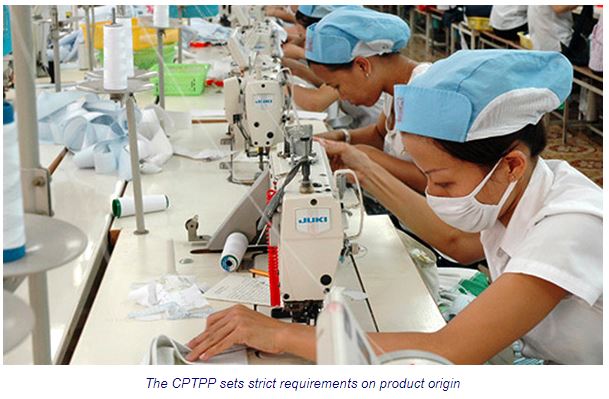Vietnam’s garment and textile sector will benefit from new FTAs
According to the Vietnam Textile and Apparel Association (VITAS), the CPTPP will help Vietnam accelerate its growth and make the export market more balanced. The zero-percent tariffs will help the country’s textile and garment industry expand market share in countries with current high tax rates.
As for the EU-Vietnam Free Trade Agreement (EVFTA), Managing Director of Vietnam’s largest textile and garment producer Vinatex Cao Huu Hieu said that the EU is currently the second largest market of Vietnamese textiles and garments after the US, with a growth rate of 7-10 percent yearly. Therefore, when joining the EVFTA, the sector’s exports to this market are forecast to surge sharply thanks to a lot of tax incentives.
Experts estimated that the EVFTA is expected to provide the same effect as the Vietnam-Korea Free Trade Agreement (VKFTA). Specifically, in 2018, Vietnam’s textile and garment industry has enjoyed spectacular growth in the Korean market with more than a 20 percent increase. Currently, Vietnam is prepared to catch up with China in the Korean market, with a market share of 34.46 percent, compared with China’s 36.45 percent. With the current growth rate, it is likely that Vietnam can overtake China in the Korean market this year.
“Hopefully, after the EVFTA comes into effect, Vietnamese businesses will make good use of the opportunities offered by the agreement so that we can dominate the European market in return for other markets, especially in the case that China will likely participate in the CPTPP,” Hieu said.
If China joins the CPTPP, Vietnam and the rest of the CPTPP countries will face fierce competition because China is the top ranked global textile exporter in both volume and value. Chinese products are also very diverse, from garments to yarn and textile products. Therefore, if China takes part in the CPTPP, it will be difficult for Vietnamese garment enterprises to compete in CPTPP market, Hieu explained.
Improvement needed
However, experts have also pointed out some difficulties facing the textile and garment sector under the new-generation FTAs.
According to Truong Van Cam, vice president of VITAS, the CPTPP sets strict requirements on product origin, a big challenge for Vietnamese enterprises and the textile and garment sectors, as they are heavily dependent on material sources imported from China, India and other ASEAN countries.
The current source of materials for Vietnam’s textile and garment industry is not diverse, Cam said, suggesting that Vietnamese exporters thus should promote the support industry, and ensure they can prove the origin of raw materials for production.
To take advantages of the upcoming FTAs, experts have also advised enterprises to invest in modern machinery and technology to increase labor productivity and improve the competitiveness of export products.
Vinatex’s Hieu also suggested that businesses regularly organize short training sessions to improve the skills of workers in operating the modern equipment.
According to Pham Xuan Hong, President of the Ho Chi Minh City Association of Garment and Textile (AGTEK), together with Vinatex, AGTEK, the Department of Trade and Industry, and the Trade Promotion Centre of Ho Chi Minh City have also coordinated with Singapore’s Training Centre to open training courses for management and technical staff on applying and operating new technologies, including training workers to improve their skills in the field of investment.


 Thailand
Thailand




